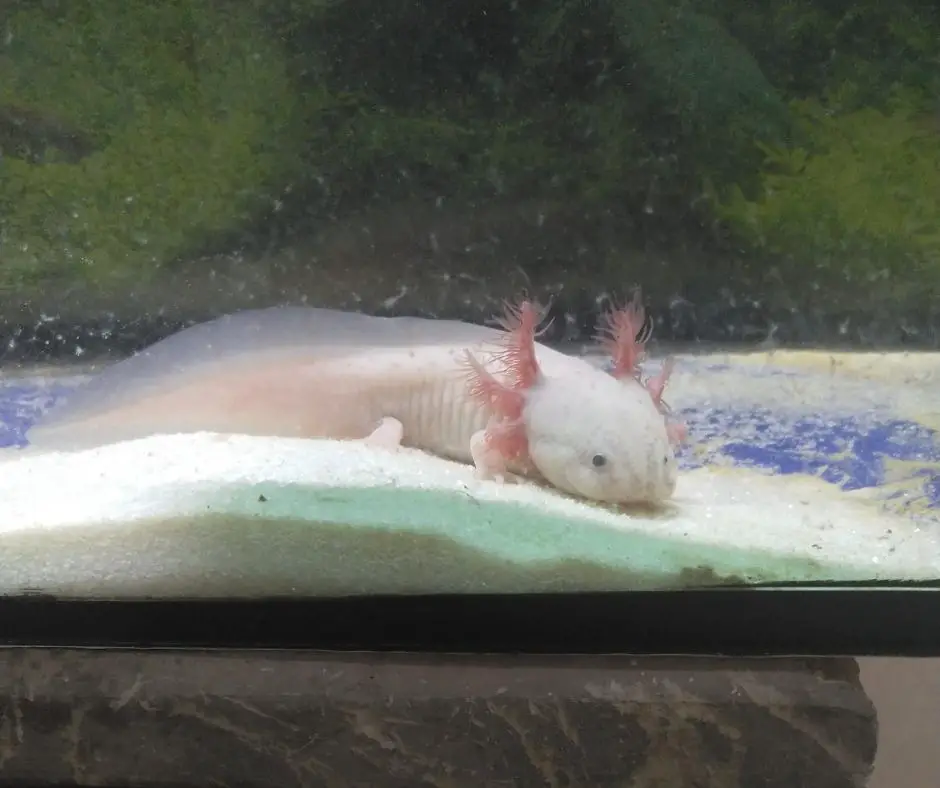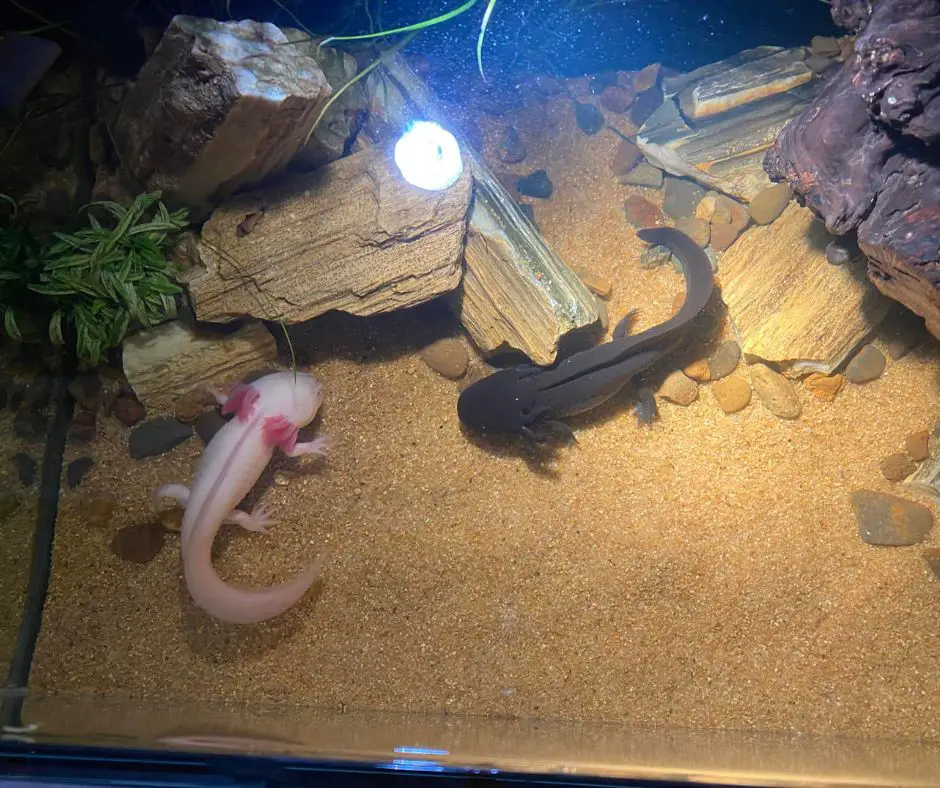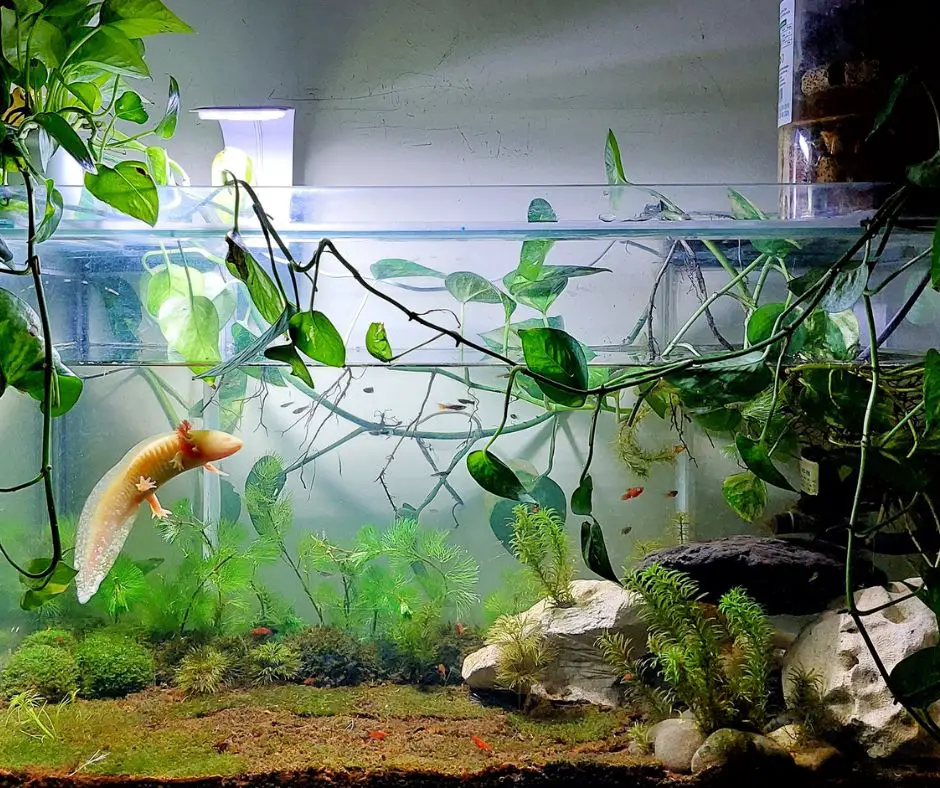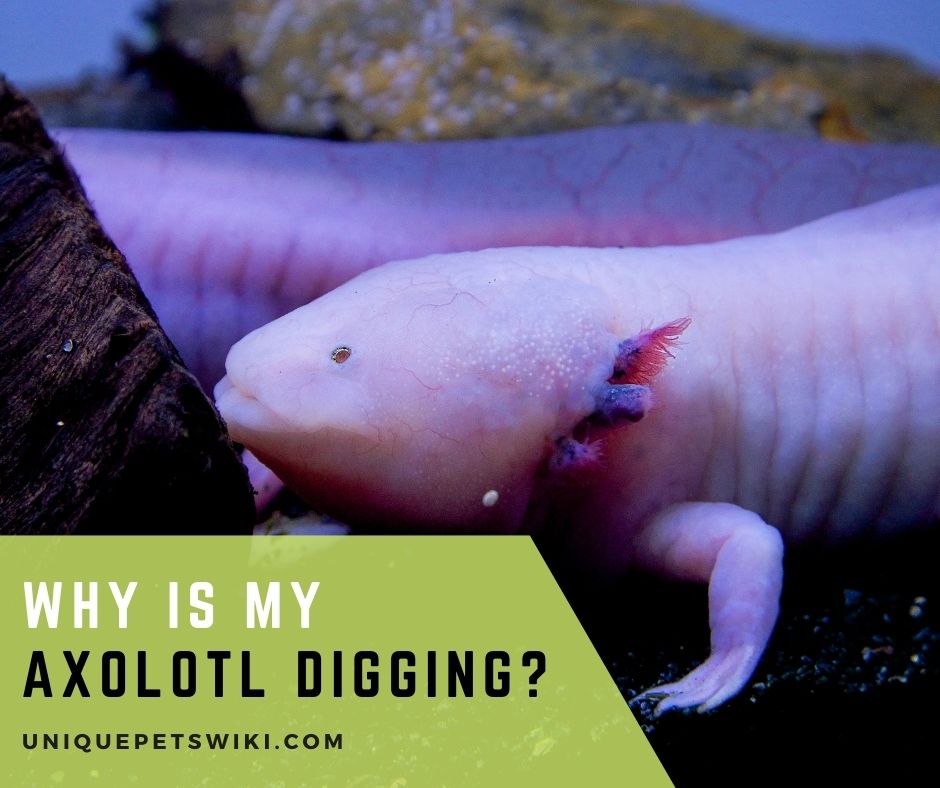Axolotls are cute creatures and are suitable pets if you are looking for a unique and fascinating animal to keep as a pet.
However, axolotls have several characteristics which can be surprising. One of such characteristics is that axolotls may be digging, making you wonder what this is.
Digging is a normal behavior in axolotls, and they usually do this to hunt for food. They can also dig the soil if the light ray in their tank is too much. However, this can be a problem if they accidentally ingest gravel or if you want a tidy and organized tank.
This article will help describe everything that you need to know about axolotl digging, from why they display this behavior to how you can prevent it.
Contents
Why Is My Axolotl Digging?
Axolotl digging is normal, and you don’t have to worry as an axolotl owner. They may be digging the soil out of instinct or searching for food, and all you need is to observe when they dig to determine its cause.
Some of the reasons that axolotls dig their tanks are stated below.

Instincts Behavior
Axolotls may dig due to instincts. For instance, axolotls are nocturnal creatures as they are more active at night. Therefore, they can dig during the day or night if the light is too high.
Axolotls usually dig into the mud and aquatic vegetation to hide from predators in the wild. so they do the same thing in captivity.
Furthermore, axolotls can also dig if you just put them in a new tank or hide from aggressive tank mates. However, they may dig the mud for food when hungry at night.
Looking for Food
A common reason why axolotls dig is when it is hunting for food. Your axolotls can dig into their substrate if they believe something yummy is under it. For instance, some leftover worm may burrow into the substrate, and your axolotl is just trying to catch them.
You will notice as your axolotls dig through the mud with their noses to look for bugs and invertebrates. Axolotls can also dig through the plants to camouflage and wait for their prey to swim into their mouths.
What Should You Do If Your Axolotls Dig
Although it is axolotl’s natural behavior to dig their tank, you need to ensure there are no impact factors for your axolotls. This is because your axolotls can easily get impacted if they swallow substances like gravel while digging.
Therefore, the first thing you can do is ensure that you don’t use substrate-containing gravel in your axolotl’s tank. You can then worry about the cause of the problem after you are sure your axolotls cannot get health problems from digging.
You can try to add live food into their tank. Your axolotls will be attracted to the food and stop digging if they are digging for food. However, you may need to check the new elements in the tank, adjust lighting, and remove tank mates if your axolotl is digging to hide.
You can also prevent your axolotls from digging by keeping them in a tank without substrates. However, this is not a good idea for axolotls.
Axolotl Digs and Related Problems
Here are some unusual behaviors that axolotls can display.

Axolotl Gulping Air
It is normal behavior for axolotls to gulp air, and they usually do this to keep them floating. However, if your axolotl is gulping for air frequently, it may indicate a water quality issue.
This can also be a sign that your axolotl’s gills are shrinking, affecting how they breathe. A good way to treat this is to aerate the tank to help increase the oxygen level.
Axolotl Swimming Around
It is common for axolotls to swim around without any purpose, especially for young axolotls. However, if you notice a pattern in how they swim, it may indicate poor water quality in their tank.
Furthermore, axolotls can also swim in circles around their tank if they have ammonia poisoning. The best thing to do once you notice this is to check the water quality parameter in the tank and ensure the water parameter is at an ideal level.
Axolotl Blowing Bubbles
This behavior is also called the buccal pumping, and axolotls usually blow bubbles to pass our metabolic waste and gaseous exchange. You will see your axolotl going to the top of the water and gulping air, producing bubbles.
This behavior is quite normal for axolotls, and you don’t have to worry.
This may indicate that you need to clean their tank regularly. Some of the other reasons why axolotl may blow bubbles are
- When playing
- As a mating ritual
- When they are excited

Conclusion
It is normal for axolotls to dig their tank, and you don’t have to worry about this. They usually do this due to instincts or when looking for food.
You can message us in the comment section below if you have any question or comment on why your axolotl is digging.
